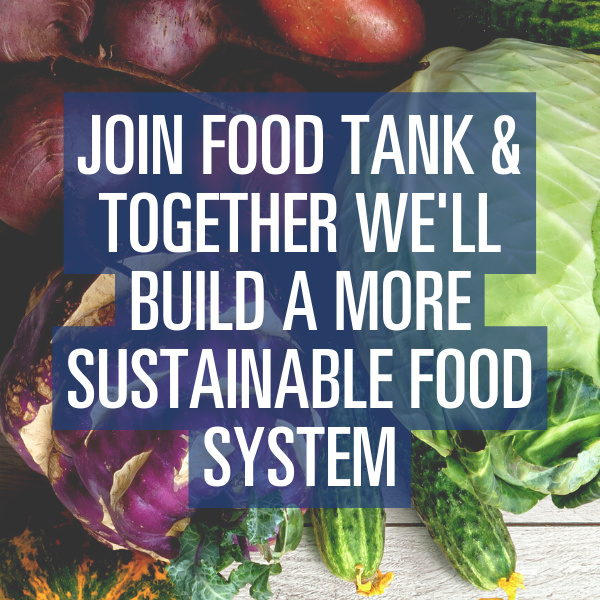Do you want more stories like this to land straight in your inbox? Subscribe to Food Tank’s newsletter, released weekly on Thursdays, by clicking here.
Agrobiodiversity can boost food security, make farming systems more stable and sustainable, and improve productivity the U.N. Food and Agriculture Organization (FAO) reports. But of the thousands of known edible plant species, only three—rice, wheat, and maize—contribute to 60 percent of calories and proteins humans obtain from plants. The African Vegetable Biodiversity Rescue Plan aims to diversify eaters’ diets by unlocking the potential of African vegetable biodiversity.
The 10-year Plan, set to run from 2025-2035, aims to address hunger, malnutrition, poverty, and the climate crisis by rescuing, conserving, and using African vegetable biodiversity while addressing supply, demand, and policy challenges. According to the World Vegetable Center, which is leading the Plan, the crop diversity will be actively used by farmers, breeders, and researchers from African countries to increase the supply of nutrient-dense food.
“Effects of climate change, like droughts, floods, and urbanization pose the most danger to Indigenous African vegetable varieties. This rescue plan is an opportunity to bring other stakeholders in this response to save our vegetable species,” says Gabriel Rugalema, Associate Director General for Africa at the World Vegetable Center.
These crops have long been essential for healthy, resilient food systems—and they always will be. While there are many to dive into, Food Tank is rounding up just a handful of crops that represent great opportunity, so that we can begin to get to know some of the varieties that can fuel the future.
African Nightshade (genus Solanum): Crops in this genus—particularly Solanum scabrum—have been used for centuries across Sub-Saharan Africa for nutritious and pharmacological purposes. The vegetable is rich in antioxidants, vitamins, carbohydrates, carotenoids, minerals, and proteins, and it’s often served fried, dried, or fermented.
Amaranth (multiple species): Amaranth is already one of the most commonly consumed indigenous vegetables in Kenya and Tanzania, and it can be used in multiple beneficial ways. The amaranth grain, which can be consumed on its own or used to fortify other grains and flours, is rich in protein, lysine, and calcium. And the leaves, which are commonly boiled or fried, are rich in vitamin C, iron, and zinc.
Celosia (Celosia argentea): Celosia has distinctive flower spikes reminiscent of colorful wheat and is used for both food and ornamentation. It has a soft texture and mild taste, and it’s particularly tolerant to a variety of harsh growing conditions. Leaves are often used in soups and stews across Nigeria, Benin, and Congo, and they’re high in calcium, phosphorus, iron, vitamins, and protein.
Drumstick tree (Moringa oleifera): Other names for drumstick trees include “the Miracle Tree” and “the Tree of Life”—clues as to why the protein- and antioxidant-rich tree has been used for centuries for both nutrition and healing. The tree’s flowers are used to make tea; young leaves, stalks, and pods can be eaten as vegetables; and mature seeds can be roasted like peanuts or ground into powder as an antibacterial water purifier.
Jute mallow (Corchorus olitorius): This leafy green vegetable, also used as a fiber crop, is native to tropical and subtropical regions of Africa and is highly adaptable to stressful agricultural conditions. The leaves, which are commonly cooked as a vegetable or dried to thicken soups, are rich in vitamins A, B6 and C, potassium, iron, folate, dietary fiber, and other antioxidants.
Kei Apple (Dovyalis affra): Kei apples, originating in South Africa, are highly nutritious fruits that are used to make jams, jellies, juices, and wine. And the trees they grow on are able to remain productive in adverse conditions like drought, frost, and high saline levels, and they help build biodiversity by attracting birds, baboons, antelope, and monkeys.
Kersting’s groundnut (Macrotyloma geocarpum): This legume is high in minerals and crude fiber and low in fat, and it’s grown by smallholder farmers across West Africa for its ability to fix atmospheric nitrogen and boost soil fertility. Culinarily, it’s used as a grain legume in a variety of local dishes, and the plant itself is also fairly resistant to climatic stresses.
Loufa gourd (Luffa aegyptiaca): The Loufa gourd is grown widely in Nigeria and found across tropical and subtropical Africa. Young gourds are edible both raw and cooked and contain a variety of compounds that support metabolic health and offer anti-inflammatory and anti-cancer properties. Tougher mature gourds are particularly useful as sponges, packing materials, air filters, and shoe soles.
Malabar spinach (Basella alba): This leafy green vegetable thrives in hot weather and grows very quickly. Although it’s not actually closely related to common spinach, Malabar spinach can also be eaten raw or cooked. The leaves can also be used as a thickener, and both the leaves and stems are good sources of Vitamins A and C, calcium and iron.
Spider plant (Cleome gynandra): Despite its similar English name, this particularly drought-tolerant leafy green herb is not related to a common houseplant. This spider plant, also occasionally called spiderwisp or African cabbage, grows highly nutritious leaves that researchers say can contribute to food security, and its seeds contain oils that naturally repel insects.
Yambean (Sphenostylis stenocarpa): A highly versatile member of the legume family, the yambean is commonly eaten for its seeds in West Africa and as a tuber vegetable in East and Central Africa. Because it’s abundant in vitamins and minerals, yambeans can be used to fortify other foods and alleviate malnutrition.
Read more about the importance of diversifying our crops and diets in a new piece on Forbes by clicking HERE.
Articles like the one you just read are made possible through the generosity of Food Tank members. Can we please count on you to be part of our growing movement? Become a member today by clicking here.
Photo courtesy of Joydeep, Wikimedia Commons















